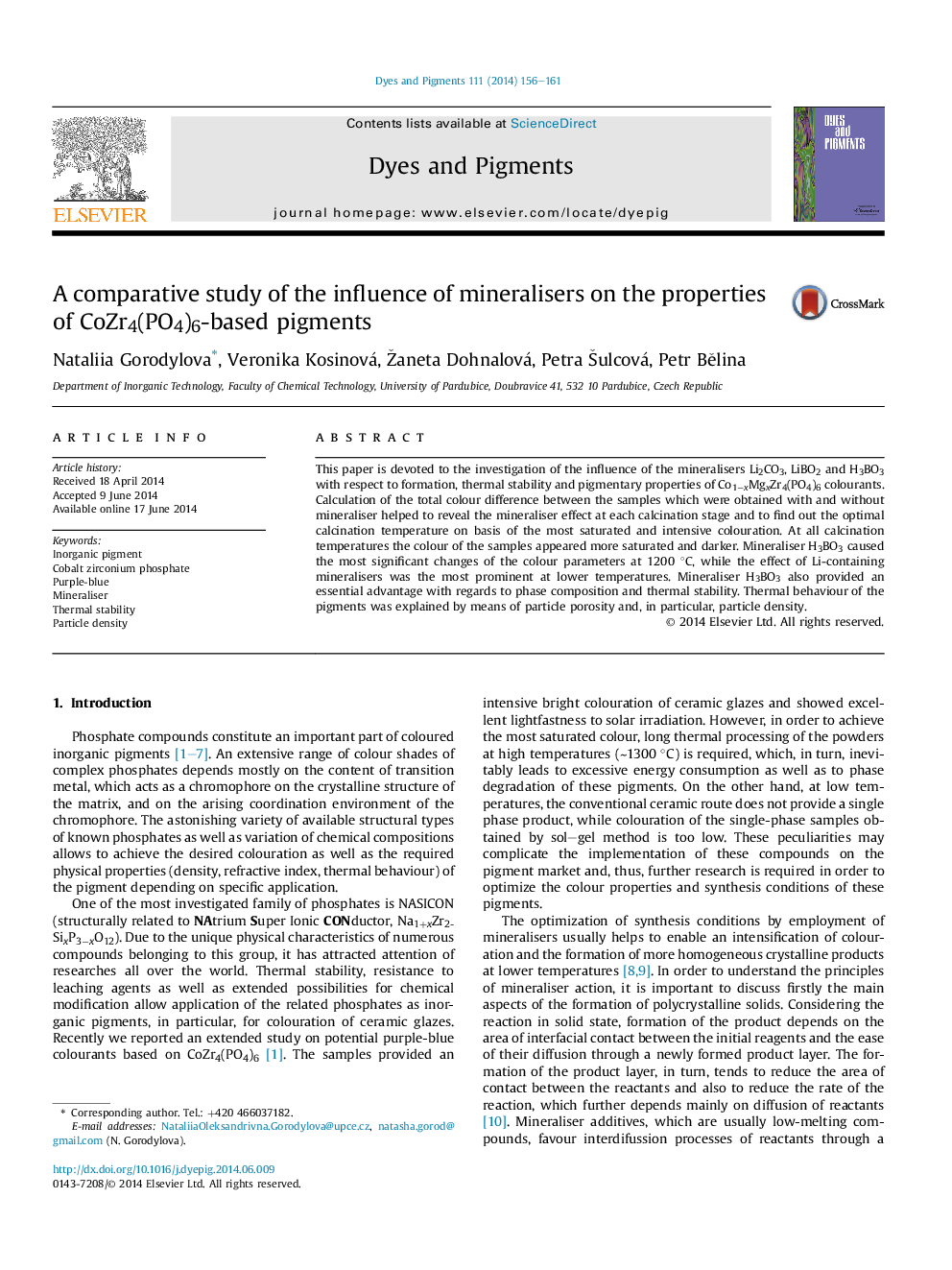| Article ID | Journal | Published Year | Pages | File Type |
|---|---|---|---|---|
| 175917 | Dyes and Pigments | 2014 | 6 Pages |
•Mineralisers induced a more intensive colouration of the pigments at low temperatures.•Mineraliser H3BO3 provided formation of the pure phase product at lower temperature.•Addition of H3BO3 mineraliser led to improved thermal stability of the pigments.•Resistance to sintering of the pigments was explained by means of particle density.
This paper is devoted to the investigation of the influence of the mineralisers Li2CO3, LiBO2 and H3BO3 with respect to formation, thermal stability and pigmentary properties of Co1−xMgxZr4(PO4)6 colourants. Calculation of the total colour difference between the samples which were obtained with and without mineraliser helped to reveal the mineraliser effect at each calcination stage and to find out the optimal calcination temperature on basis of the most saturated and intensive colouration. At all calcination temperatures the colour of the samples appeared more saturated and darker. Mineraliser H3BO3 caused the most significant changes of the colour parameters at 1200 °C, while the effect of Li-containing mineralisers was the most prominent at lower temperatures. Mineraliser H3BO3 also provided an essential advantage with regards to phase composition and thermal stability. Thermal behaviour of the pigments was explained by means of particle porosity and, in particular, particle density.
